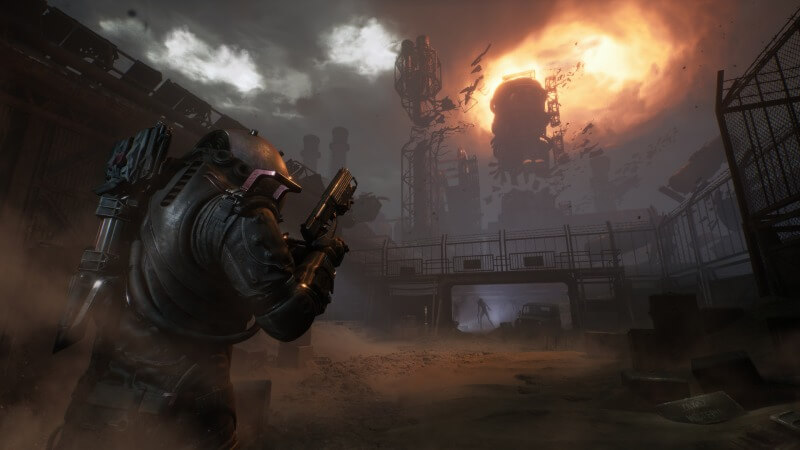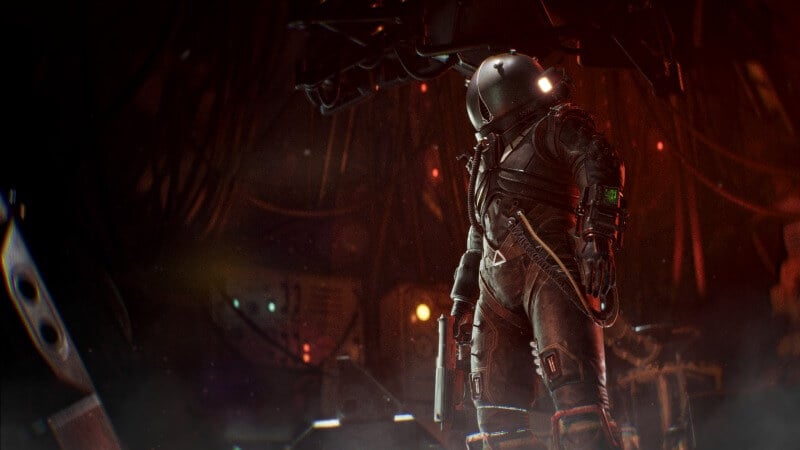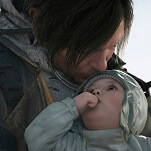Cronos: The New Dawn’s Survival Horror Thrills Mostly Redeem Its Narrative Missteps

It’s probably fair to say that Bloober Team, the Polish studio behind a host of horror games, had a fairly mixed track record going into last year’s Silent Hill 2 remake: incidents like the infamous baby bonk sequence and The Medium’s widely criticized ending left many long suffering Pyramid Head fans anxious about what would happen when the studio got their hands on a classic. But then, the remake came out, and despite some critiques, most people seemed to like it.
Building on that relative success, the studio is continuing on a survival horror trajectory with its latest: Cronos: The New Dawn. It’s a time travel story. More specifically, it’s one starring a laconic heroine in a futuristic diving suit laden with Giger-esque psychosexual imagery, as she follows the orders of an enigmatic organization that speaks in cryptic directives. And somehow this very specific situation is only one part of a sprawling narrative that involves pandemics and the fall of Marxist-Leninist Poland.
And then there’s the game part: a familiar yet well-executed Resident Evil/Dead Space-inspired affair where you shoot a bunch of sci-fi zombies in the head—but with a twist! Said infected humans love merging with the corpses of their comrades to form bigger and more imposing flesh creatures unless you intervene. This premise has the player darting from one side of the battlefield to the other to break up these unions, all while dodging elongating limbs and acid attacks. While Cronos’ ambitious storytelling begins to unravel in its final act, its well-orchestrated tension, alien imagery, and rock-solid survival horror loop mostly make up for its lackluster climax.
This journey begins with a long list of questions. Your character, referred to as “Traveler ND-3576,” awakens from a metal womb and is given vague instructions by a robotic voice in service of something called The Collective. Donning a suit that draws more than a little inspiration from the design of the unnamed extraterrestrial pilot in Alien, The Traveler sets out on a quest through a post-apocalyptic Poland. Humanity is nowhere to be seen, having been infected with a mysterious disease that turned them into freaking flesh monsters with the innate desire to merge. From here, The Traveler jumps between the present and the past of communist Poland’s New Dawn district (inspired by the real-life Nowa Huta in Kraków), as they follow The Collective’s orders in tracking down human “Targets” for “Essence Extraction.”

And while your overriding directives are esoteric, the means with which you’ll be carrying them out will be familiar to survival horror fans: scavenge for ammo, make do with limited inventory space, and blast various unsettling creatures with guns. While you’d be forgiven for accusing the game of being a “Dead Space knock-off” at first glance, given how it also features a protagonist in futuristic armor who finds messages written in blood that educate you on how to interact with the game’s core mechanic, there are plenty of differences that give this experience its own compelling specifics.
For starters, there’s your weapon, the Relic, a shifting firearm that’s most damaging when charged. With its initial pistol-like mode, The Sword, you’re basically encouraged to stand in place while readying a powerful blast. In practice, this often means you’re forced to stare down the nightmarish flesh beasts approaching you as you (hopefully) ready a headshot that will stun them. However, perhaps your most important tool is The Torch, a close-range flamethrower blast that sets everything on fire in a radius around you. As the in-game tutorial points out, this basically serves like a dodge or a block, letting you interrupt incoming attacks.
Another of The Torch’s essential functions is that it helps you prevent the Orphans from merging with dead enemies by burning them or the corpse they’re trying to absorb. While at first, I thought the game’s repeated insistence to “not let them merge” was a bit overblown, eventually fights became more chaotic, making it clear just how bad things can get if you don’t take an active approach —if left unchecked, your foes will continue to combine until they create hulking monstrosities that eat through ammo, leaving your guns are dry as you desperately sprint through maze-like hallways. The Torch’s ability to instantly stop a merge can be invaluable, but of course, it’s a limited resource that requires careful consideration each time you use it.
As someone whose strategy in Resident Evil 4-inspired games is to 180 at the first sign of danger and run as far away as possible before finding a vantage point at maximum range, so I can keep the icky zombies away from me, Cronos often requires you to get up close and personal, making its encounters tense and frantic. And perhaps most interesting is how your limited ammo encourages innovation, setting up situations where you kite a group of Orphans until they’re clumped together, before turning on a dime towards to stun them all with flames before finishing them with a shotgun. And while your only defensive move besides your Torch is a somewhat leisurely paced run, enemy attacks are telegraphed enough that as long as you sprint in the correct direction with the right timing, you can avoid these strikes for the most part (assuming you didn’t get greedy going for a charged point-blank headshot). If there’s one big flaw to the running and gunning segments, it’s that, at least on my mid-end PC, the game ran quite poorly, with the types of stutters and frame drops that for whatever reason seem all too common among Unreal Engine 5 games.








































